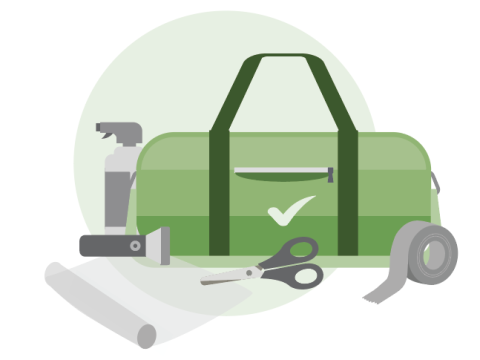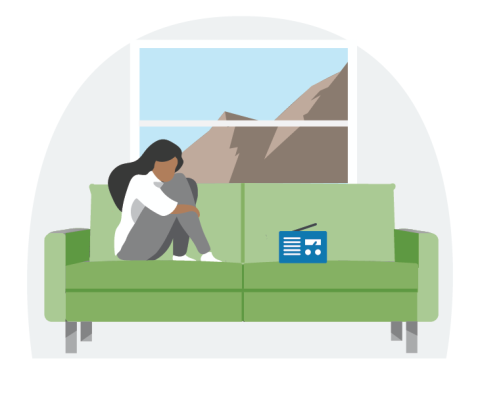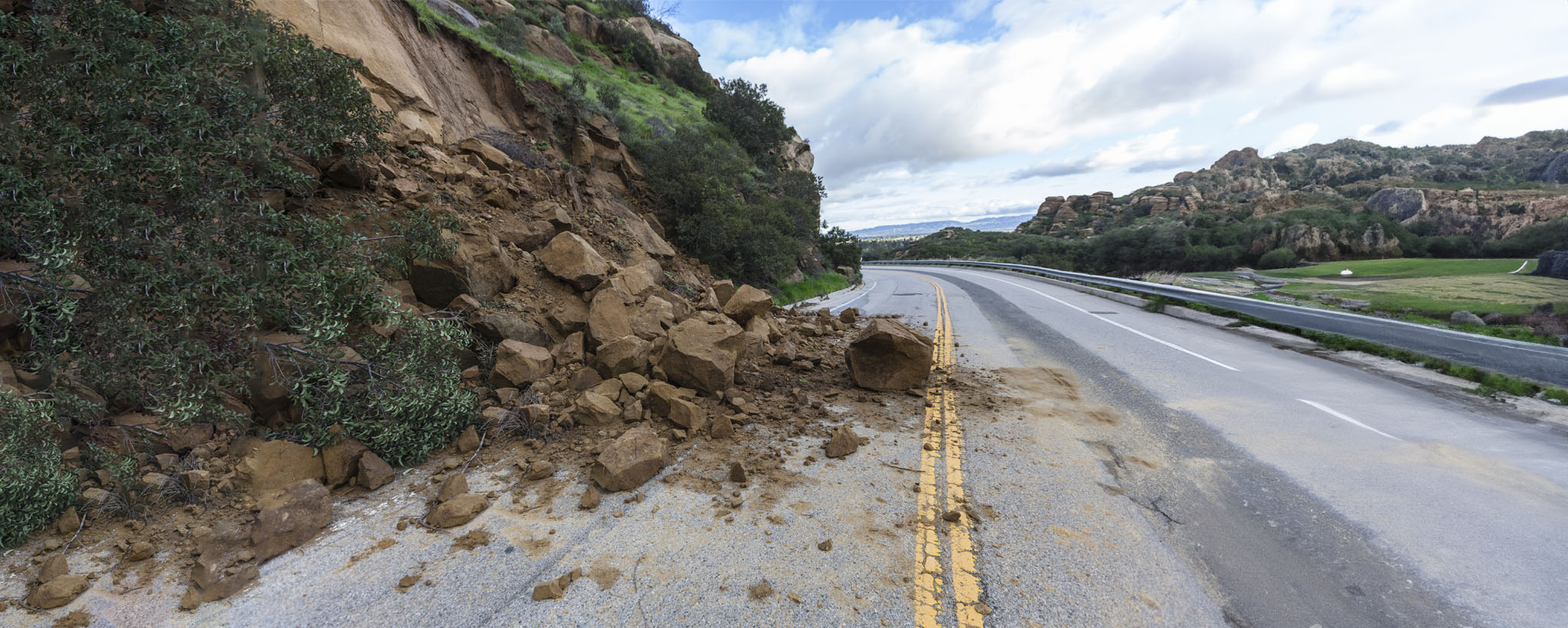Before a Landslide
During a Landslide
After a Landslide
Related Content

If you are a disaster survivor, please visit FEMA.gov for up-to-date information on current disaster declarations. If you have questions about your disaster assistance application, visit disasterassistance.gov, use the FEMA mobile app or call (800) 621-3362.
Landslides occur in all U.S. states and territories and can be caused by many factors including earthquakes, storms, volcanic eruptions, fire and human modifications of land. The most dangerous, life-threatening and deadliest landslides are the ones that occur quickly, often with little notice.

A landslide occurs when masses of rock, mud or debris move down a slope. When a wildfire burns a slope, it increases the chance of landslides for several years.
How to protect yourself or your property depends on the type of landslide. Land-use zoning, professional inspections, and proper design can reduce many landslide problems, but evacuation often is the only way to protect lives from a debris flow or other fast-moving landslide.
Not all landslides are fast. Some slow-moving landslides move at a snail’s pace, stopping and starting, and not advancing more than three feet a year. While these landslides rarely cause loss of life, they can cause damage to land and property over time.
Before a Landslide
The following are things you can do to protect yourself, your family and your property from the effects of a landslide or debris flow:

- Build an emergency kit.
- Make a plan for your household, including your pets, so that you and your family know what to do and where to go in the event of a landslide.
- Sign up for your community’s warning system. The Emergency Alert System (EAS) and National Oceanic and Atmospheric Administration (NOAA) Weather Radio also provide emergency alerts.
- Leave if you have been told to evacuate or you feel it is unsafe to remain in your home. Text SHELTER + your ZIP code to 43362 (4FEMA) to find the nearest shelter in your area (example: shelter 12345).
- Consult a professional for advice on appropriate preventative measures for your home or business, such as flexible pipe fittings, which can resist breakage better.
- Protect your property based on recommendations from a qualified geotechnical professional and/or local city/county guidance on protection from debris flow and flooding. You can't stop or change the path of a debris flow. However, you may be able to protect your property from floodwaters or mud by use of sandbags, retaining walls or k-rails (Jersey barriers).
- In mud and debris flow areas, consider building channels or deflection walls to try to direct the flow around buildings. Be aware, however, that when a flow is big enough, it goes where it pleases. Also, you may be liable for damages if you divert a flow and it flows on a neighbor's property.
- Talk to your insurance agent if you are at risk from a landslide. Debris flow may be covered by flood insurance policies from the National Flood Insurance Program (NFIP).
Recognize Warning Signs
Watch for debris flows and other fast-moving landslides that pose threats to life:
- If you are near a wildfire burn area, sign up for emergency alerts and pay attention to weather forecasts for the burn area.
- Listen and watch for rushing water, mud or unusual sounds.
- Unusual sounds such as trees cracking or boulders knocking together, might indicate moving debris. A faint rumbling sound that increases in volume is noticeable as the landslide nears.
- Huge boulders in the landscape can be signs of past debris flows.
Watch for slow-moving landslides, or earthflows, that pose threats to property:
- Changes occur in your landscape such as patterns of storm-water drainage on slopes (especially the places where runoff water converges) land movement, small slides, flows, or progressively leaning trees.
- Doors or windows stick or jam for the first time.
- New cracks appear in plaster, tile, brick or foundations.
- Outside walls, walkways or stairs begin pulling away from the building.
- Slowly developing, widening cracks appear on the ground or on paved areas such as streets or driveways.
- Underground utility lines break.
- Bulging ground appears at the base of a slope.
- Water breaks through the ground surface in new locations.
- Fences, retaining walls, utility poles, or trees tilt or move.
- The ground slopes downward in one direction and may begin shifting in that direction under your feet.
During a Landslide

- Listen to local news stations on a battery-powered radio for warnings.
- Always follow the instructions from local emergency managers. They provide the latest recommendations based on the threat in your community.
- Stay alert and awake during a storm that could cause a landslide. Many deaths from landslides occur while people are sleeping.
- Be aware that by the time you are sure a debris flow is coming, it will be too late to get away safely. Never cross a road with water or mud flowing. Never cross a bridge if you see a flow approaching because it can grow faster and larger too quickly for you to escape.
- If you do get stuck in the path of a landslide move uphill as quickly as possible.
- Avoid river valleys and low-lying areas during times of danger.
- If you are near a stream or channel, be alert for any sudden increase or decrease in water flow or water that changes from clear to muddy. These can be signs that a landslide is coming.
After a Landslide
- Stay away from the slide area. There may be danger coming from additional slides.
- Listen to local radio or television stations for the latest emergency information.
- Watch for flooding. Floods sometimes follow landslides and debris flows because they may both be started by the same conditions.
- Check for injured and trapped persons near the slide, without entering the direct slide area. Direct rescuers to their locations.
- Report broken utility lines and damaged roadways and railways to appropriate authorities. Reporting potential hazards will get the utilities turned off as quickly as possible, preventing further hazard and injury.
- Allow trained professionals to check the building foundation, chimney, and surrounding land for damage.
- Replant damaged ground as soon as possible since erosion caused by loss of ground cover can lead to flash flooding and additional landslides in the near future.
- Seek advice from a geotechnical expert for evaluating landslide hazards or designing corrective techniques to reduce landslide risk. A professional can advise you of the best ways to prevent or reduce landslide risk, without creating further hazard.


